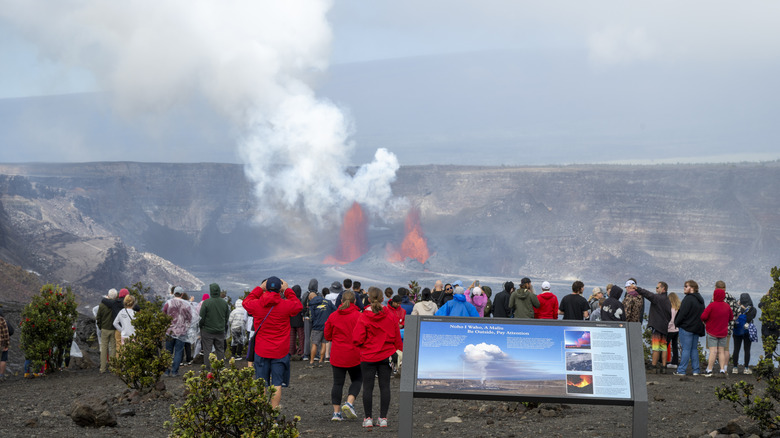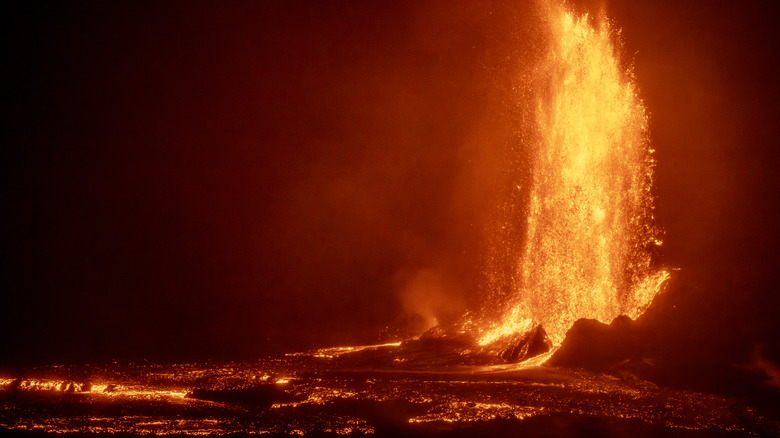Visit Hawaii's Volcanoes National Park For A Glimpse At Active Eruptions
We may receive a commission on purchases made from links.
Located on the Big Island, the namesake atoll of the Hawaiian island chain, Volcanoes National Park has sprung to the national consciousness recently as Mt. Kilauea has begun erupting with some regularity. Kilauea and Mauna Loa, which is also located within the park, are both classified as active volcanoes, with Mauna Loa having last erupted in 2022. Visitors to this tropical national park have an opportunity to witness these eruptions, which shape the land mass of the island, as well take a peek into the past by viewing ancient petroglyphs.
In addition to being home to some of the most active volcanoes in the United States and a bevy of petroglyphs and other cultural relics, Hawaii is also known as one of the best wildlife getaways in the U.S. There are a number of unique animals you'll see while visiting Hawaii. This unique combination of geographic, biologic, and cultural rarities makes Volcanoes National Park a one-of-a-kind destination. If you hope to see one of nature's most awe-inspiring phenomena, Volcanoes National Park should be on your national parks bucket list. Keep in mind, it is also very easy to hop over to Big Island and Volcanoes National Park even if you are staying on Oahu or Maui via interisland flights offered by Hawaiian and Southwest airlines.
How to see volcanic eruptions at Volcanoes National Park
The first thing to know about witnessing volcanic eruptions at Volcanoes National Park is it doesn't happen every day. The frequency of eruptions changes, as does the amount of glowing lava visible. So, if you've decided to visit the park specifically to see eruptions, pay attention to the updates posted on the park's website for current conditions and webcam views of both Kilauea and Mauna Loa. You should also keep in mind that visitation spikes as the eruptions occur. That means you can typically expect crowds when the volcanoes are at their most active.
Visitors will have a number of viewing stations to choose from, some of which can be driven to and others that require hikes of various distances. However, volcanic eruptions are natural phenomena that are not completely predictable. The same goes for the wind and weather conditions, including smoke and fog, which can obscure viewing. As a result, the best locations to view an eruption can vary from day to day, hour to hour. Additionally, eruptions vary greatly in duration. This means there are no guarantees to see a dramatic lava burst, but by planning ahead, monitoring updates, and being flexible with your viewing location, you will increase your odds.
Of course, eruptions and lava flows don't follow a 9-to-5 schedule, either. Not only can the volcano erupt at night, but some of the most dramatic views and images are a result of viewing eruptions and flows after dark. If hiking to view a nighttime eruption, it is highly recommended to bring a headlamp like the Coast XPH30R. Regardless of the time of day, those hiking to viewing locations should wear sturdy hiking shoes, dress in layers, and bring a rain jacket.

